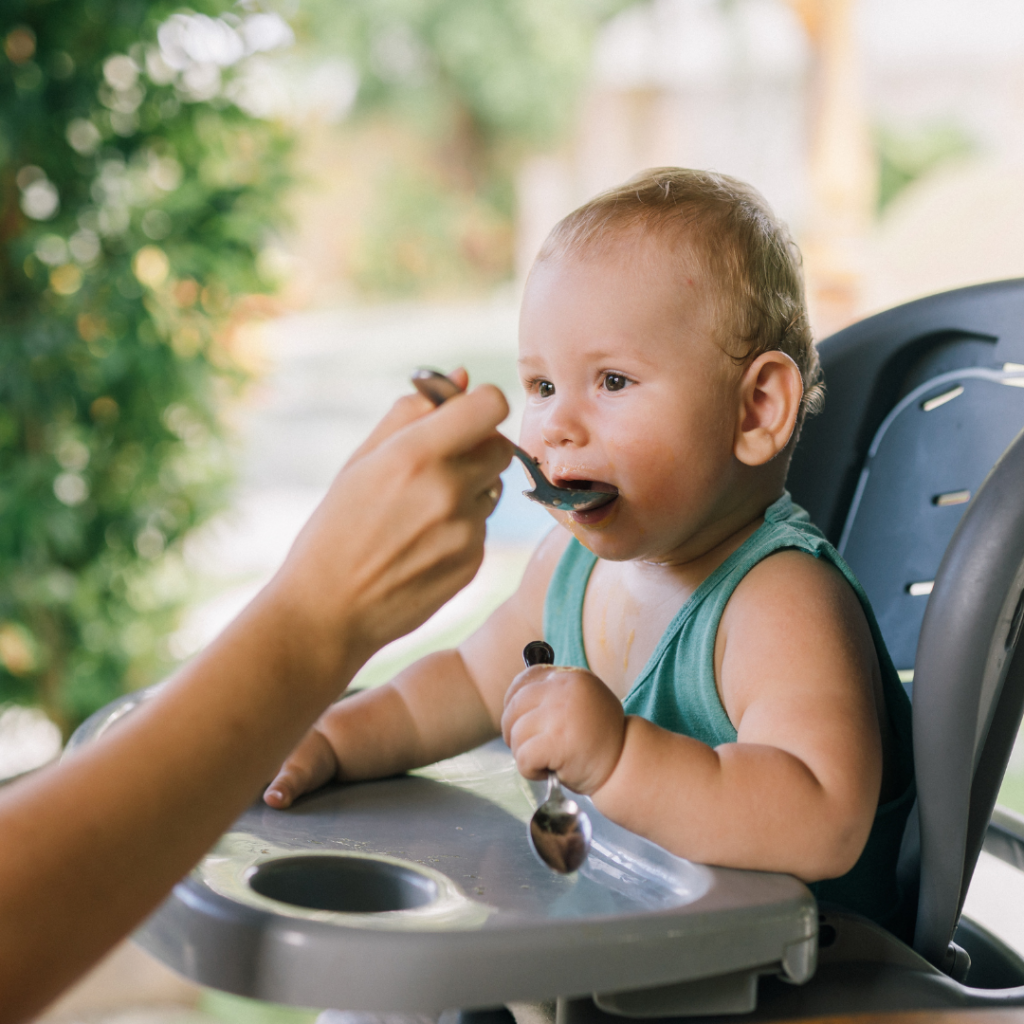When people hear that you’re an infant educator, the general assumption is that you change diapers and watch babies sleep all day. It’s almost infuriating the amount of misled assumptions that fly around when people don’t actually know what we do: navigate up to eight different personalities, needs, wants (not to mention the families they come with) all while trying to create and maintain a peaceful environment each and every day.
The best (and only) way to create that kind of environment is to establish routines while still being flexible. It would be pure chaos if an infant educator and assistant had eight babies in a classroom with no plan in place for each day! But chances are, even if you went to school for education, you were probably not taught how to establish healthy habits and routines with this age group. You probably learned for 4-year-olds and above. If so, I hope this post helps you feel confident in what you’re already doing or perhaps teaches you a few things. While every baby is different and has different requirements, all babies will thrive under consistency, routine, and warmth.
Here are five reasons why routines are necessary in infant care:
1. Routines help babies feel safe.

Now, I’m not talking about the rigid, backbreaking routines that they have in the military. Routines are just daily activities that repeat so that infants and toddlers come to expect and anticipate them. Morning greetings, meal times, diaper changes, and afternoon goodbyes; these are a few examples of simple and daily activities that are necessary to instill a feeling of safety for babies.
When six-month-old Ava arrives at your classroom and you are at the doorway every day to greet her by saying, “Good morning, Ava” that is a simple, yet important routine. It helps Ava know that you are going to be there for her each day, and she gets to hear her name.
Then when Ava is greeted, you have mom hand her over to you, and together you say, “Bye mommy, I love you,” and have Ava wave to mom by gently lifting her arm in a “wave-like” motion. This may not go smoothly the first few times, but eventually, Ava will start to do it on her own and be excited to go to school because she knows what to expect.
Babies feel safest when there is consistency, both with routine and staff.”
Creative Curriculum, a nationally acclaimed curriculum in early childhood education, intentionally designs its infant curriculum to focus solely on “incorporating meaningful experiences into daily routines.” In order to build upon these formative years and help infants get ready for the next phase of learning, establishing these healthy and developmentally appropriate routines is crucial.
A chaotic, unorganized program will not benefit the child or the educator. Establishing routines starts with learning what each child needs and creating repetitive habits/traditions that intentionally help babies feel safe. Experts at Parent Cue say that if a baby could communicate, the question they would ask is, “Am I safe?”
2. Infant care: One size does not fit all.
It is so important to understand that routines in an infant classroom are individualized to each baby. A good infant educator understands that what works for one baby may not work for another, whether due to age, personality type, or just a daily routine change.
Getting to know each baby and how routines go at home is so helpful when implementing their routines in care. Finding out from parents if their babies are on feeding schedules or eating on demand and finding out if they nap routinely in a crib will help establish your path to each child’s individual plan. Just like an elementary school teacher has a lesson plan for her class, so will an infant educator. However, it will feel like 8 lesson plans rather than one since each baby has their own routines and needs, so it takes a lot of organization and thoughtfulness.
Tip: Use a dry-erase board to show each baby’s last feeding, nap, and diaper change.
3. Create a good rapport with infants and parents.
The only way to get to know a baby is to spend time with them and observe them. Ask yourself, “What makes this baby excited, scared, happy, etc.?”
Have good conversations with parents to gain their trust and learn about them. This does not mean you need to become besties and go to happy hour with parents (please don’t do that!), but it does mean you will need to put a little extra effort into learning more about them.
What do they do for a living? How many children do they have? What is the family dynamic like?

As you get to know parents, continue to follow up on previous conversations to build rapport. If Mrs. Smith comes in letting you know that Billy didn’t sleep well because Mr. Smith is away on business, then follow up a few days later at drop off/pick up asking how his trip was and if sleep has been better.
These are basic principles that will make everyone’s experience more pleasant. Infants can sense discord, chaos, and negative energy, so establishing rapport is key.
Tip: Use diaper changing time as individualized quality time with each baby. Establish a ritual with each one every time you change their diapers. Rather than rushing through it and just treating it as part of a “duty,” (no pun intended), take the time to sing a song, point to different body parts, say names, etc. This will help establish a healthy rapport with each infant.
4. Get parents on the same page.
Fewer things are harder than when parents are unhappy and feel like they are not in the loop. Being in the education field for over 20 years, I’ve found that when you miss communication with parents, things can go downhill fast.
Some parents think they know everything and some admittedly play everything by ear. Either way, the worst days are when there are misunderstandings about caregiving. I’ve found the best way to avoid that is through daily communication using an app or program that keeps you on track.
Our center has used HiMama for the last 8 years, and it is a game changer. We can message parents instantly via text or email. We can post pictures privately and instantly on the app, and we can establish routines with parents to make sure we are on the same page with how we are partnering with their children.
For example, if Lucy is sucking down her bottles and crying immediately afterward consistently, you as the educator may realize that Lucy needs more milk sent in since she is growing. At home, Lucy only nurses, so mom may not be aware of how much milk to send in. Just simply by tracking Lucy’s feeding and providing notes on her “mood” afterward, the educator can suggest trying to send in a few ounces more per bottle to see if that helps. This type of communication will allow educators and parents to connect and plan routines together.
Tip: If you don’t use an app at your center, I highly recommend it. Center management software saves on admin time and parents love them, not to mention they truly help with establishing routines.
5. Consistency in activities and staffing is key.
According to a University of Georgia study on infant brain development: “Children develop emotional security when their world is nurturing, consistent, and predictable. As children experience the same routines over and over, the brain strengthens connections that will lead to trust and secure attachments.”

As an infant educator, avoid changing routines too often. It can get repetitive and “boring” to do the same things each and every day, but the research shows that setting up rituals and following them consistently will lower anxiety and create more harmony and peace in the classroom.
Childcare centers have a reputation for high turnover, which can be a huge red flag for parents when choosing a provider. If a parent finds out that there have been five different educators in the infant classroom this year, they will likely not choose that center because they understand the importance of consistency. Children thrive on stable, predictable, and positive relationships that can only occur if the same educators are with the same babies each day.
Tip: When staffing the infant classroom, try to have the same adults give lunch breaks to infant educators each day to allow for even more consistency in the classroom.
If you were hoping to read this and have an easy, magical way to get every baby on the same routine- feeding, napping, and activity schedule, then you are in the wrong place, and possibly wrong profession (eek, that was harsh).
But really- it’s so important to know what is appropriate for each age, and for babies, they are all so different that you just need to figure out what each one needs and do those things consistently and lovingly.
I shouldn’t walk into an infant room and find all babies sleeping or all babies eating or all babies needing a diaper change (that would be a nightmare!). Instead, I should see established routines for each child happening at different times of the day depending on that child. There are samples of infant schedules that I’ve done in the past, but they come with warnings because there is no one way to create a general routine in an infant classroom. See that as a wonderful opportunity rather than an obstacle.
What are some ways you incorporate routines into the infant classroom? Comment below and share your tips!


